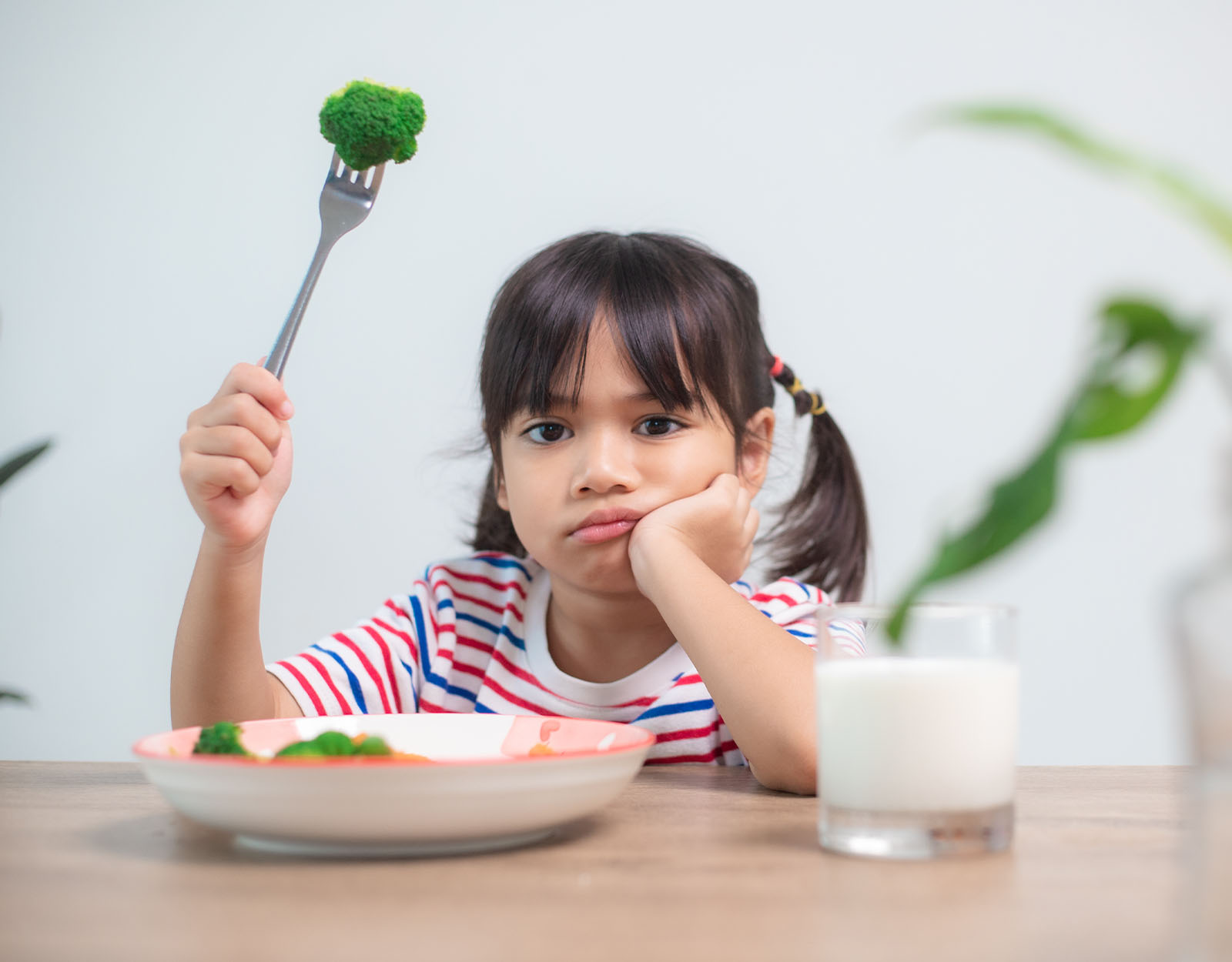Kids
How Parents Can Introduce Their “Ausome” Child to New Food
The biggest frustration among parents is getting their autistic, or “ausome” child to eat new food. Here are some ways to do so.
Kids with autism thrive on a routine because there’s less new info to process (Alhuzimi, 2021; Chepngetich and Sanga, 2022; Milan and Lemana, 2023). That also includes choosing what kind of food they eat!
In fact, some autistic kids may also have Sensory Processing Disorder—wherein they have trouble processing the info from their food. This includes factors like taste, texture, color, and even the way it’s plated because there are too many new things happening at the same time (Conde, Galang, Malata, Roxas, Rivera, and Reyes, 2023).
Luckily, there are ways to introduce new food sensations to kids with autism, and here are some ways to do so.

1. Rule out any other digestive problems.
Eating problems are not just not liking the food, but sometimes, even processing it. Kids with autism are known not to process gluten well—thus making their outbursts more frequent (Doreswamy, et. al, 2020; Keller et. al, 2021, Quan, Xu, Cui, Han, Hendren, Zhao, and Lu, 2022).
Others may even have allergies and they may have trouble telling us—resorting instead to screaming, crying, and fighting us as we try to feed them. This is why some pediatricians would recommend seeing a nutritionist to rule out any dietary issues first.
2. Avoid pressuring them to eat.
It may feel frustrating at first especially when we see how they’re “wasting” food. But autistic kids don’t easily take to new foods like other kids because that’s a whole new, unfamiliar, and separate experience altogether.
Take apples and oranges for example. To us, they’re both fruits, but kids with autism think of them as two different entities—thus reaching for the apple if it’s more familiar to them than the orange. That’s because autistic kids can’t do schemas or mental concept maps like we do, so associations don’t sink in until we keep exposing them to them.
Forcing them to “clean their plate” or “finish all their food” will teach them that mealtime is a horrible time. All the more they won’t eat! Instead, leave a teaspoon of the new food on their plate. Sure, we might have to throw it away a few times but at least it’s a lot less than a full portion. After some convincing, they will eat it when they’ve seen it enough times.
3. Let them “play” with their food.
Although our parents have scolded us for “playing” with our food, kids with autism need play time to better understand what they’re eating. They’ll probably poke the food with their bare hands, grab it, squish it, and even press it against their face! Yes, it does look messy, but that’s how they process texture—different parts of their skin take in information differently.
Avoid wiping their face up right away. We may hate messy things but this is one of those necessary processes that will help our kids familiarize themselves with food.
4. Eat with them.
Autistic kids learn by example. When they see other people doing things or eating something, they take to an idea quicker and make it part of their routine or meal.
At home, eating together also creates a safe space for them where they can explore other food and slowly classify mealtime behaviors that are okay at home but not in public (e.g. slurping noodles). At the same time, if they see someone eating a new food and enjoying it, they’ll be more inclined to try it.
5. Avoid mixing food together.
While some of us are okay with putting different kinds of food on our plates—as we normally do in buffets—autistic kids don’t take that well. Food touching each other, sauces mixing…that’s a whole other thing to process for them.
Yes, it may seem like no big deal, but to them, it’s an extra thing to think about. And this frustrates them! They’ll either not touch it or for those who are explosive, have a meltdown because they’re trying to say, “I don’t want to mix my food!”
Unfortunately, that can become an issue with stew-heavy cuisines like Filipino or Indian, or even in buffets and restaurants. Instead, have separate bowls for each dish or use plates with partitions, so that the kids can process them one at a time.
6. Give them various food choices.
Time to rehearse our go-grow-glow pyramid! We always want our kids to eat a balanced meal so they can get their much-needed nutrients, but kids with autism challenge us with an extra layer of knowing what foods won’t overwhelm them.
Giving them a choice on what they want to eat removes the stress of forcing them into eating something. It may mean cooking more dishes but the important part is for them to eat a balanced meal. Just make sure they’re getting their proteins, carbs, and fiber, among others.
7. Use plain, monochromatic plates.
We may love our ceramics but using printed ones may overwhelm kids with autism because it’s an additional thing to stare at or look at.
Coupled with the food that’s just full of color and texture, they might be overwhelmed by their meals, which makes it harder for us to feed them. Use plain plates to draw their focus toward the food itself, so they don’t have a hard time processing what they’re eating.
8. Introduce new food with food they’re familiar with.
We don’t mean mixing sauces, per se, but having a beloved favorite helps them associate that the new food we’re serving is just as good. For example, if our kids like fried chicken and ketchup and we want them to eat vegetables, serve some fried beans with it. The fried beans also go well with ketchup and since it has no sauce, it won’t make anything new to process!

It may take a while but remember, fed is best!
Although our autistic kids may frustrate us with eating what looks like an unbalanced diet, it’s only a temporary measure until they finally accept new kinds of food. The key to raising autistic kids is to expand their routine by introducing new foods little by little because they do get overwhelmed easily.
And when our kids with autism do eat the new food, praise them with the speech blub “Good job! Yum yum!” That way, they know they’re doing something right.
References
Alhuzimi, T. (2021). Stress and emotional wellbeing of parents due to change in routine for children with Autism Spectrum Disorder (ASD) at home during COVID-19 pandemic in Saudi Arabia. Research in Developmental Disabilities, 108, 103822.
Barrientos, B. A. V., Badajos, A. F. T., Bucog, E. F. M., Mauro, R. V. C., & Bulan, P. M. P. (2023). Mealtime Experiences of Children with Autism Spectrum Disorder from the Perspectives of Filipino Occupational Therapists in Cebu: Implications for Practice. Internet Journal of Allied Health Sciences and Practice, 21(1), 2.
Chepngetich, V., Ng’eno, C. L., & Sanga, P. K. (2022). Experience of Parents with Children with Autism in Mandaue City, Philippines.
Conde, A. K. L. P., Galang, C. E. O., Malata, K. E. C., Roxas, R. N., Rivera, Z. C. L., & Reyes, R. C. R. D. (2023). Maternal perspectives on mealtime experiences of children with autism: A narrative inquiry.
Doreswamy, S., Bashir, A., Guarecuco, J. E., Lahori, S., Baig, A., Narra, L. R., Patel, P., & Heindl, S. E. (2020). Effects of diet, nutrition, and exercise in children with autism and autism spectrum disorder: A literature review. Cureus, 12(12).
Keller, A., Rimestad, M. L., Friis Rohde, J., Holm Petersen, B., Bruun Korfitsen, C., Tarp, S., Lauritsen, M. B., & Händel, M. N. (2021). The effect of a combined gluten-and casein-free diet on children and adolescents with autism spectrum disorders: A systematic review and meta-analysis. Nutrients, 13(2), 470.
Milan, J. B., & Lemana II, H. (2023). Challenges and Opportunities for Children with Autism Spectrum Disorder during the Pandemic: Parents’ Views in the Limelight. International Journal of Qualitative Research, 2(3), 238-246.
Quan, L., Xu, X., Cui, Y., Han, H., Hendren, R. L., Zhao, L., & You, X. (2022). A systematic review and meta-analysis of the benefits of a gluten-free diet and/or casein-free diet for children with autism spectrum disorder. Nutrition reviews, 80(5), 1237-1246.
Turan, B., Kocarslan, N., Gulsen, M., & Dursun, O. (2020). Your country is your routine: The evacuation, quarantine, and management of behavioral problems of a child with autism during COVID-19 pandemic. DUSUNEN ADAM-JOURNAL OF PSYCHIATRY AND NEUROLOGICAL SCIENCES, 33(3).
More about kids with autism?
How Tony Snell’s Late Autism Diagnosis Helped Him and His Son
10 Things Parents Must Know About Autism Spectrum Disorders (ASD)
Adulting With ADHD or Autism: Coping in the Typical World





